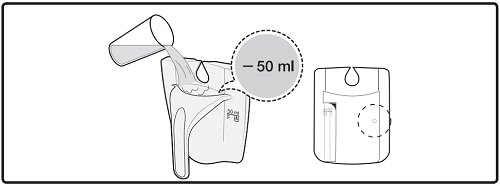How to clean your Samsung Microwave
In some households, the microwave is used more than other kitchen appliances. After prolonged use or food not being covered when heating, your microwave might be in need of a good clean. Remember, it is easier to cleanthe mess right after they happen, and if you clean the microwave periodically, that sticky film won't form. Here's to having a microwave that's clean.
Caution : Never use any type of abrasive cleaner or solvent, such as alcohol, benzene, ammonia, or paint thinner on the microwave. Doing so will damage the finish and rust will form. When cleaning the exterior, be careful to not get liquid in the vents of the microwave.





Clean the roller rings once a month, and wash the turntable once a week. Try to clean fresh stains right away so they don't stick. However, be careful with the turntable tray right after cooking because it may still be hot.
The turntable is dishwasher safe, but if you don't have a dishwasher, you can still remove it and wash it carefully in warm, sudsy water. Make sure it's dry before putting it back in the microwave.
Your microwave may look spotless at first glance, but even with the best of care, your microwave can pick up grime over time. Just a quick wipe with a soft damp cloth and warm, soapy water about once a week should do the trick.
Clean the control panel
Wipe the control panel with a damp cloth and dry it thoroughly.
Clean under your microwave oven
During your weekly check, make sure to clean grease and dust from the bottom of your microwave using a solution of warm water and detergent.
Clean the door and door seals
Always ensure that the door seals are clean and that no grime or residue gets on them, since this could prevent the microwave's door from closing properly. Wash the glass door with very mild soap and water. Be sure to use a soft cloth to avoid scratching.
Please note:
- After cleaning, always rinse all residual cleaner off the surface and dry it thoroughly.
- Do not spray water or cleaner directly on the surface; instead apply a small amount of cleaner on the rag and then clean the surface.
- Always clean up spills and stains as quickly as possible using the simplest method to get the job done. Start by wiping with a damp cloth in the direction of the polish lines and follow up by drying the area to prevent water spots. If that does not work, try a weak solution of dish washing liquid, household ammonia, or a glass cleaner on a soft cleaning cloth. Again, rinse and dry thoroughly. Do not, however, mix any of those cleaning agents together.
- Never use steel wool or bleach, or any product containing chlorine, which can damage the protective layer and the metal finish.
- Rinse and dry the surface thoroughly to remove all traces of the cleaning agent and prevent spotting from trace minerals in the water.
- Glass cleaner can leave streaks on the stainless steel finish.
- Harsher chemicals (benzene, thinner, bleach, alcohol, acetone, ammonia) can erode the protective coating that is applied to the surface and could cause an electric shock.
Thank you for your feedback!
Please answer all questions.



